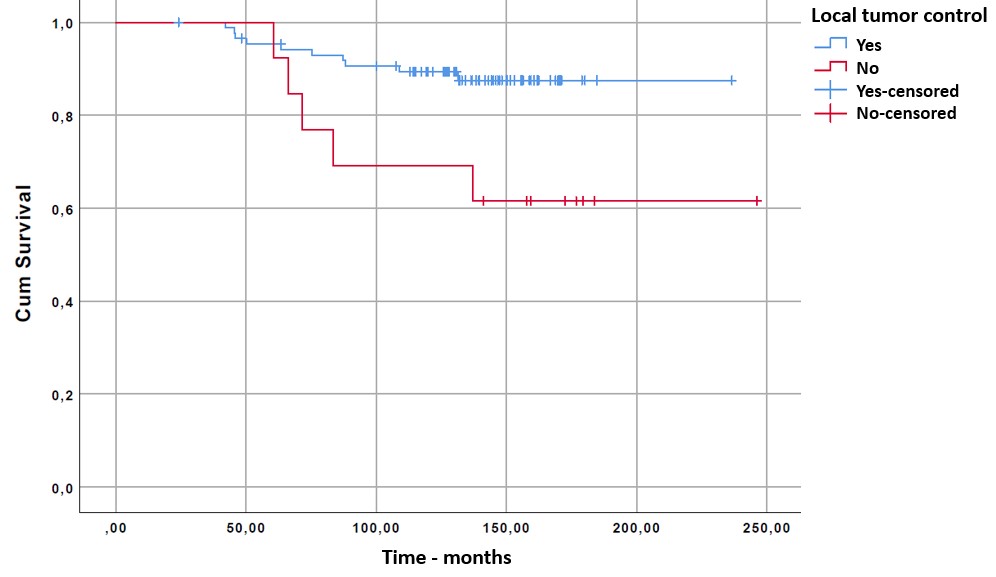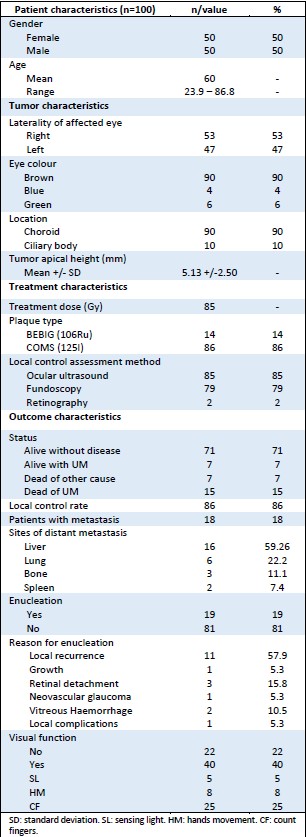Local tumor control after brachytherapy impacts on survival in patients with uveal melanoma.
Mercedes Gonzalez Cantero,
Spain
OC-0632
Abstract
Local tumor control after brachytherapy impacts on survival in patients with uveal melanoma.
Authors: Mercedes Gonzalez Cantero1, Macarena Maria Teja Ubach1, Isabel Garrido Botella1, Marta Rodriguez Roldan1, Rafael Rosel Aller1, Beatriz Deben Mendez1, Abrahams Ocanto Martinez2, Ane Escribano Uzcudun1, Elisabeth Gonzalez del Portillo1, Isabel Rodriguez Rodriguez1, Rosa Morera Lopez1
1Hospital Universitario La Paz, Oncología Radioterápica, Madrid, Spain; 2Hospital Universitario de Torrejón, Oncología Radioterápica, Madrid, Spain
Show Affiliations
Hide Affiliations
Purpose or Objective
Uveal melanoma (UM) is the most common primary intraocular tumor in adults and treatment with episcleral-plaque brachytherapy (EPB) is the standard of care in medium-size tumors since the study COMS showed no difference in survival between EPB and enucleation.
The aim of this study is to assess the impact of local tumor control (LTC) of UM after EPB on survival.
Others objectives are to study disease-specific survival and overall survival at 5 and 10 years.
Material and Methods
A retrospective observational study was conducted among 100 patients with UM treated with EPB with Iodine125 or Ruthenio106 from 2007 to 2013. Apex radiation dose was 85Gy with a dose rate of 50-125cGy/hour. LTC was evaluated periodically using ocular ultrasound, fundoscopy and retinography. Assessment of mortality and causes of death was carried out through the medical record of patients.
Results
LTC was achieved in 86 patients (86%). 5-year disease-specific survival was 94.9%. 5-year overall survival was 93%. 10-year disease-specific survival was 86%. 10-year overall survival was 80%. In the analysis of factors that might be involved in survival we obtained a significant result for LTC and disease-specific survival p: 0,018. There was no relationship between location (choroid, ciliary body, iris), gender, age, or eye-colour.


Conclusion
Brachytherapy plays an important role in UM. In fact, our results regarding LTC rate confirm this technique as first-choice treatment in medium-size tumors.
In contrast to other studies, our results demonstrate a relationship between LTC and survival.
Further investigation should be done to know and understand other factors that might be involved in these results.